The best Torched stories, worst year edition
LA always feels empty this time of year. But at the end of 2025, the city feels not just deserted, but deflated.
If we want people to move around without cars, what we really need in this city are more permanent spaces along our streets to rest and relieve along the way

Over the next four years, CicLAvia is going to serve as the ultimate testing ground for our megaevent era. If you visited Sunday's CicLAvia route, which stretched 6.6 miles from East Hollywood to West Hollywood, you got a peek at what that might look like: thousands of people moving through car-free corridors on a hot day in one of the most heavily visited neighborhoods in the city.
Open streets events can be exhausting even when it's not 90 degrees out, and what makes CicLAvia so successful is that every route is punctuated with oases of amenities. Every mile or so, once-barren blocks become clusters of food trucks, shade canopies, bike repair tents, performance stages, street seating, water stations, and an actually adequate number of public bathrooms — all perfectly situated to take a pause. Divvying up the journey turns a daunting distance into an extremely reasonable car-free excursion. And these little pit stops are particularly useful when you're traveling with children who require a brief reset in order to keep moving. Usually in the form of ice cream.
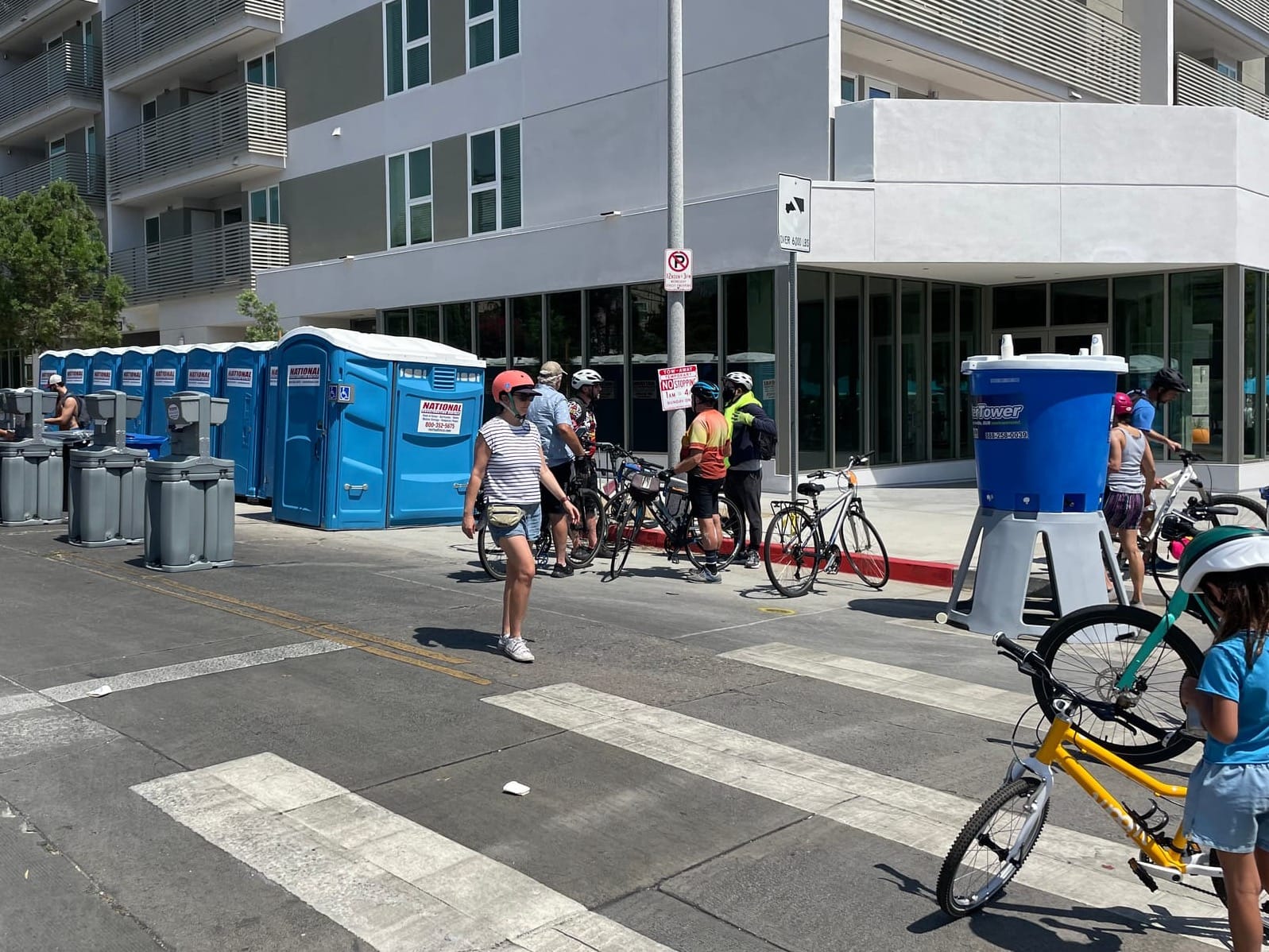
For a few hours, it's magical. The problem is that all of it is trucked off by 4 p.m. And if we want people to move around without cars, what we really need in this city are more permanent spaces along our streets to rest and relieve along the way. I'm calling these recharging stations.
As the Hollywood route showed, taller buildings are filling in some of the blanks. In recent years, the boulevard has seen quite a few new five-story apartment buildings. Some of them activate the ground floor with delightful little plazas; I love seeing the walk-up window at Handel's swarming with families. At the corner of Hollywood and Garfield Place there are apartments on all sides now, and fuzzy sycamore leaves arch towards an attractive tan brick building, blanketing the sidewalk with thick shade. Riding on new bike lanes through some of these colorful canyons of housing felt like peering into the city's future. Every LA boulevard needs this level of residential density, end to end. But we shouldn't have to rely on new development to make nice sidewalk moments.
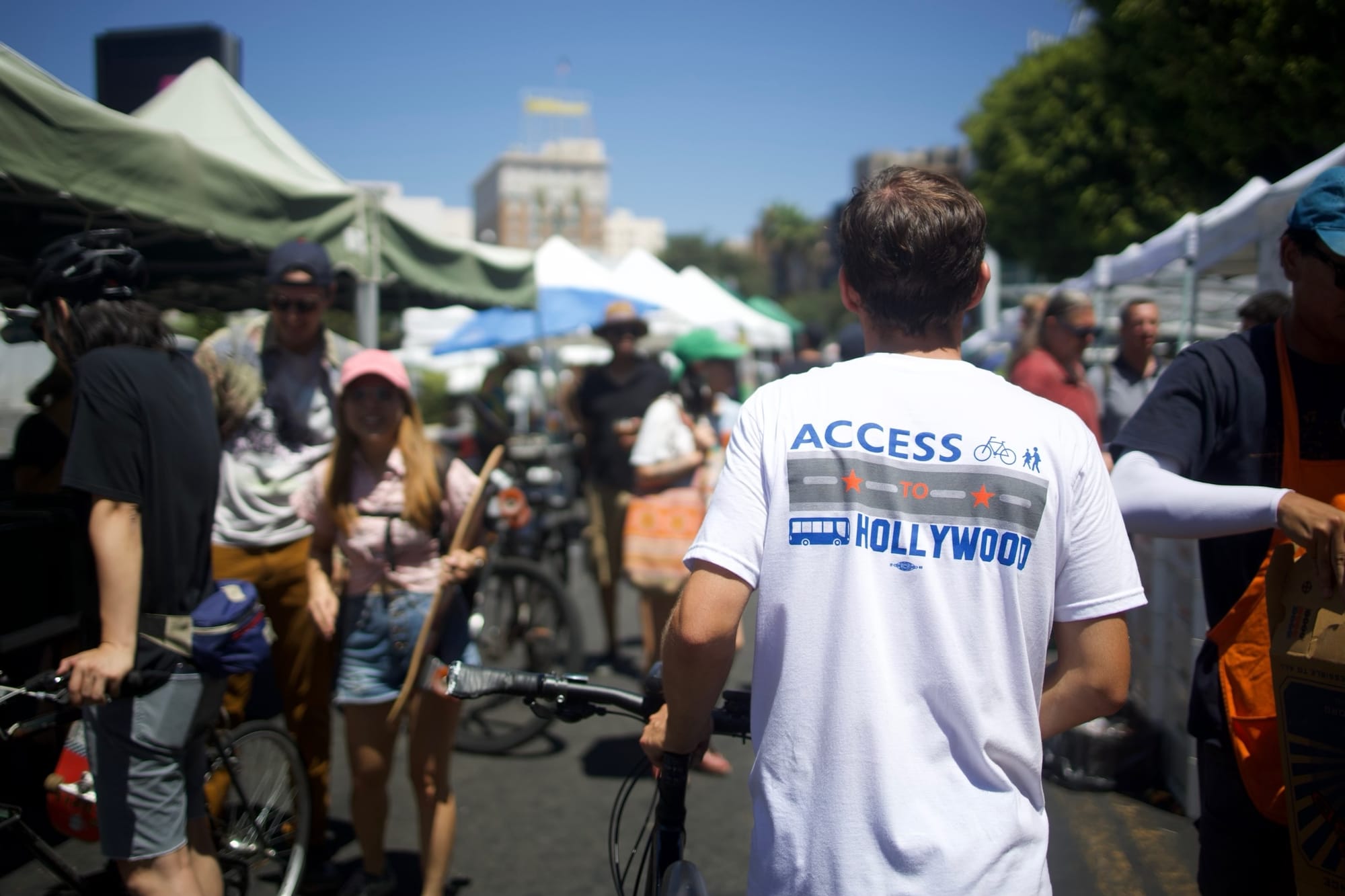
The Hollywood route also includes two powerful examples of pedestrianized streets, the most quintessential recharging stations of all. The Hollywood Farmers Market is busy every Sunday on Ivar, but even this scene gets energized by the CicLAvia surge. The market was offering free bike valet — if you make it easy, people will both stop and shop! — and it was life-affirming to watch people gleefully bundling bags of peaches and stalks of sunflowers onto their racks.
Further down the street, CicLAvia creates a non-vehicular Hollywood & Highland, something only celebrities really get to experience. The tourists who came to take photos of terrazzo stars on a Sunday morning will go home and tell people they listened to jazz while sipping iced coffee in the middle of Hollywood Boulevard — and no one will believe them.
Iconic Hollywood & Highland open, full of people, bikes, and life!!
— Have A Go (@HaveAGo) August 18, 2024
Meet the Hollywoods @CicLAvia was a blast!@ElCapitanThtre @HandHCenter @DolbyTheatre @hwood_roosevelt @HardRock pic.twitter.com/Kn0rqxzHcY
But a non-vehicular Hollywood & Highland is closer to reality than ever. At a booth in front of the B line station, Council District 13 staffers talked up a new Hollywood Boulevard streetscape plan named Access to Hollywood that will bring wider sidewalks, more seating, and expanded outdoor dining to the Walk of Fame. I'll be writing about the entire project soon, but I believe this is a key legacy improvement for 2028 — and it makes you wonder why we haven't heard about similar plans for other LA tourism magnets.
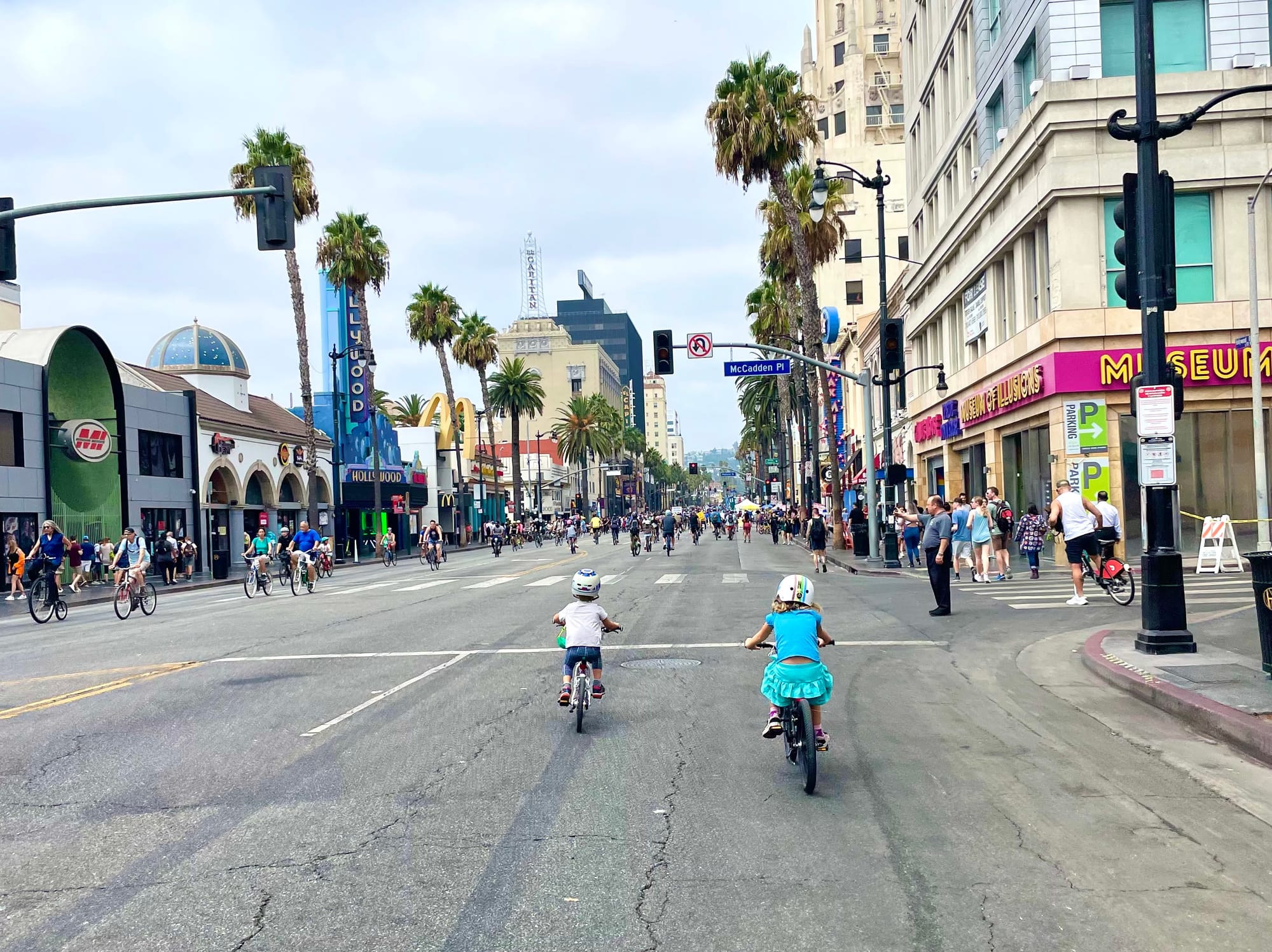
Access to Hollywood is actually two projects merged into one: a Bureau of Engineering La Brea to Gower segment that has yet to break ground, and an LADOT Gower to Fountain segment that went in very fast; these 2.1 miles of bike lanes you may have seen Sunday were completed in a few months (with a second round of improvements to come). The changes are quick-build for now — parking-protected lanes, new paint and plastic bollards, pedestrian signals — but they've transformed the nature of the roadway, making it quieter, slower, and safer for everyone. And the re-surfacing felt like butter to this cyclist compared to the washboard-like streets further west.
You may spot a certain Torched editor in this ribbon-cutting footage
But because it's an LADOT project, the improvements end at the curb. Overall, Hollywood Boulevard remains an obstacle course of LA's signature hits: shattered sidewalks, empty tree wells, eviscerated street lamps, and very few places to rest. We can't just throw in bike lanes and say we made it easier to get around.
To incorporate CicLAvia-like recharging stations into our public right of way and truly welcome people traveling without cars, we'd need city departments to collaborate on one vision for a street that reaches from property line to property line, and a city council that can fund that vision multiple years in advance. But to see what that might look like today, you don't have to go very far. At CicLAvia, it was only a few minutes away.
As the route sails south on Highland and west on Santa Monica Boulevard it's pretty easy to determine when you cross from the city of LA into the city of West Hollywood. While LA continues to treat this corridor like the freight rail route it once was, West Hollywood has transformed this street into one of its most treasured public spaces.
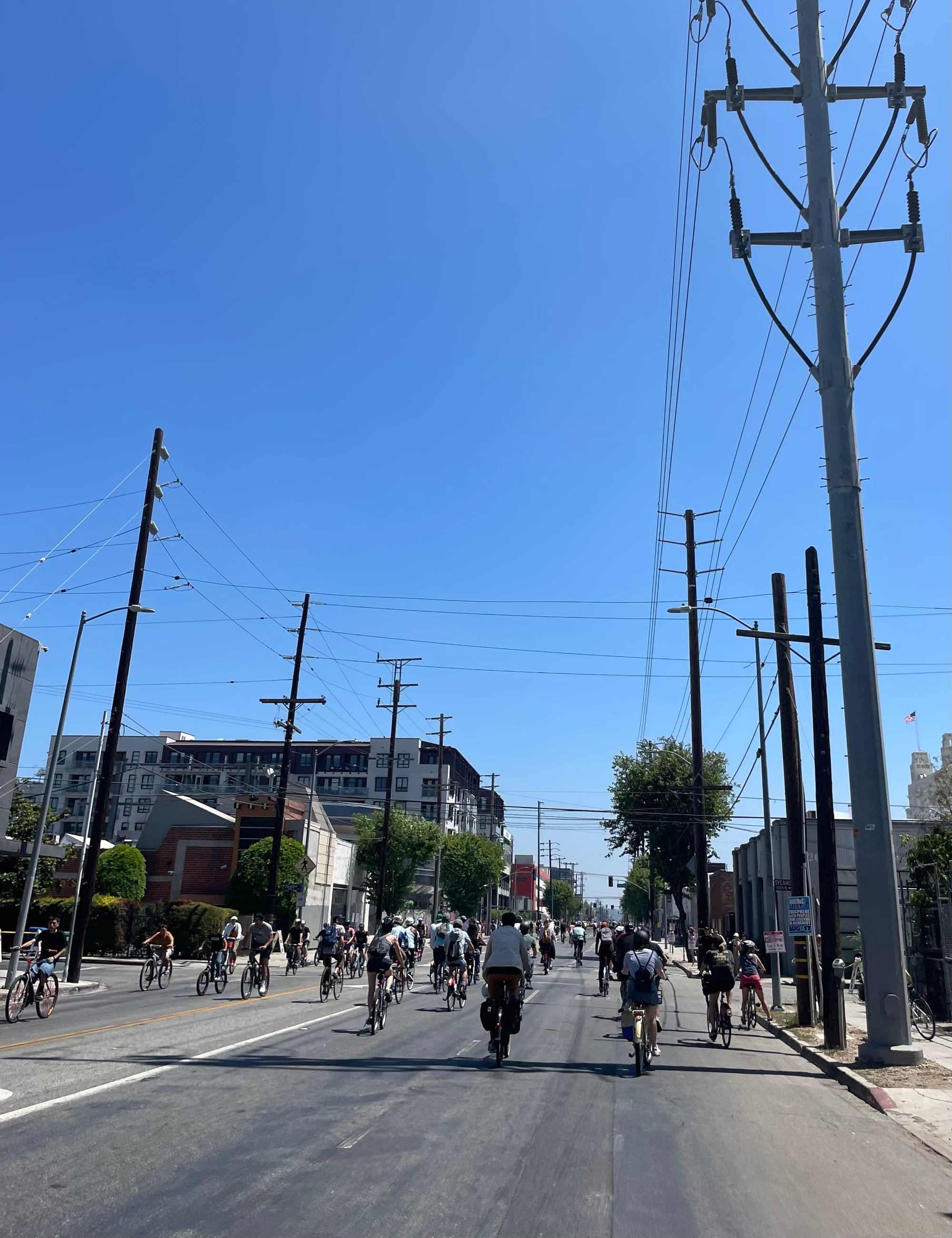
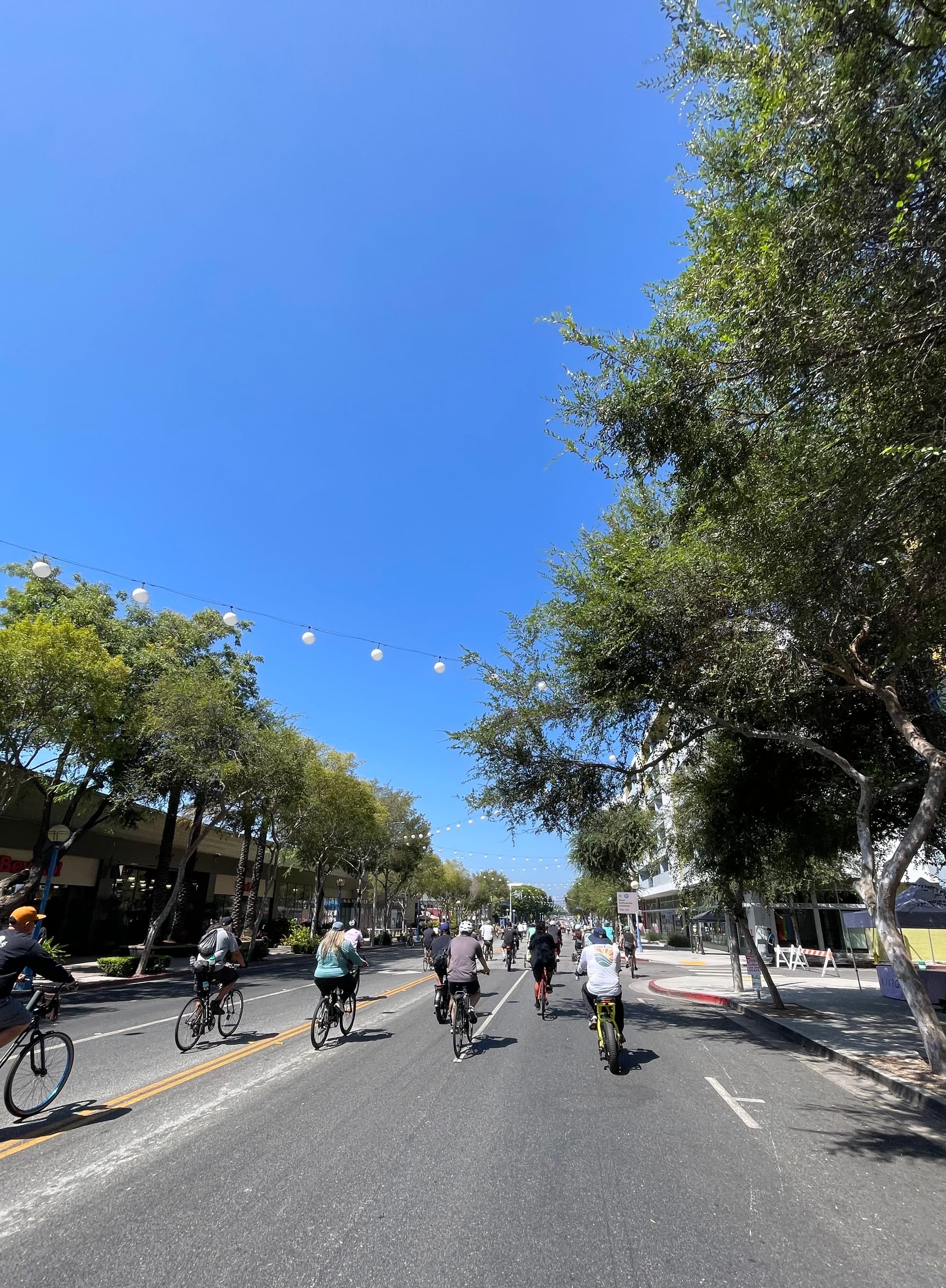
Everyone keeps saying LA isn't ready to welcome the world, but West Hollywood seems a bit more ready than us. Little public plazas are tucked randomly into developments. There are very wide sidewalks with plentiful bus shelters and benches. The well-maintained street trees create near-continuous shade. (They're working on the protected bike lanes; the city was conducting outreach at CicLAvia.) At the end of the route is a street set to be pedestrianized... plus a park... and also a pool... oh, and a library... literally every public facility one might need, all clustered into one perma-hub. On the WeHo side, there was no need to seek out CicLAvia's temporary amenities; the entrances to parks with signs for bathrooms and water fountains were right there on major streets. We didn't need to keep rolling to the next hub for a reset; the entire street was a reset.
If you look at Metro's plan for 2028 — hey, cool new website! — it does include a new concept called a mobility hub, which will provide "enhanced amenities at key rail stations." Planners have talked about pedestrianizing areas around some venues. But as CicLAvia shows us during a few fleeting hours, we need to start having more serious conversations about making recharging stations a permanent part of our streets. How can we expect people to move between LA neighborhoods without a car in the heat of summer when all we have to offer them in return are six lanes of shadeless asphalt and nothing but a crumbling curb to sit on? 🔥